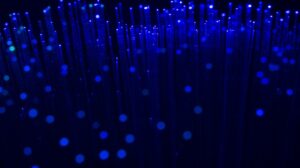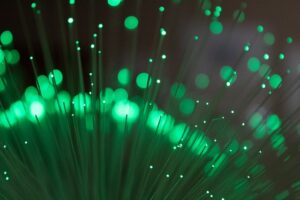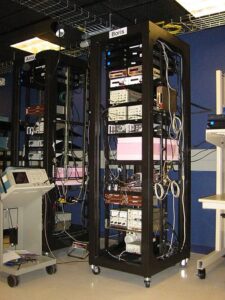 It is highly essential to have accurate spatial information of a medical device inside the patient for proper manipulation of the instrument. The thing is that a wide range of clinical applications requires spatial information. Nevertheless, each technique has its disadvantages, the promising solution is the application of fiber optic sensors in the catheter for its spatial information.
It is highly essential to have accurate spatial information of a medical device inside the patient for proper manipulation of the instrument. The thing is that a wide range of clinical applications requires spatial information. Nevertheless, each technique has its disadvantages, the promising solution is the application of fiber optic sensors in the catheter for its spatial information.
Fiber sensors are applied in various medical devices such as endoscopes and catheters. Such features as compact size, flexibility, lightweight, immunity to electromagnetic interference, and compatibility with medical imaging modalities make fiber optic sensors ideal for the medical environment. Therefore, FBG sensors are used in different studies to offer feedback from medical tools, they allow monitoring of muscle fatigue, cardiac activities, and body temperature.
Moreover, the application of fiber optic sensors also includes cardiovascular diagnosis, artery pressure detection, artery detection, intra-aortic balloon pumping, prostatic implants, and urology. For instance, FBG sensors are employed as force sensors to determine the interface between various tissues in order to help in precisely installing a catheter in the epidural space.
Additionally, sensors based on FBG multicore fibers are used in numerous different shape sensing applications. “They have been used for 3D shape recognition of solid objects, shape recognition of flexible morphine wing, and curvature detection of a continuum manipulator.” Nowadays the studies describe the application of FBG sensors in single-core optical fiber but there are also FBG multicore fibers.
To be more precise, FBG multicore fibers can work as a curvature sensor and 3D shape sensors. Although their cost is higher than in single-core optical fibers, the cross-sectional area of the shape sensor with FBG multicore fibers is smaller than the shape sensor with single-core fibers. Herewith, certain devices require the use of FBG multicore fibers because of the limited space. Also, the cores of multicore optical fibers are mechanically coupled, and the relative distance between the cores remains constant, while they experience identical temperature. Such features of FBG multicore fibers make them more beneficial than single-core optical fibers.
Finally, fiber Bragg grating sensors (FBG) written on multicore optical fibers are applied as shape sensors for flexible devices. Several FBG multicore fibers have been uniquely tested as a shape sensor for a catheter. More particularly, 4 multicore optical fibers are applied despite a single multicore fiber with 3 or more cores that have FBG sensors is enough for reconstructing the shape of a flexible device. Several multicore optical fibers expand the reliability of the sensing system against individual FBG sensor failure.
Optromix is a manufacturer of innovative fiber optic products for the global market. The company provides the most technologically advanced fiber optic solutions for the clients. Optromix produces a wide range of fiber optic devices, including cutting-edge customized fiber optic Bragg grating product line and fiber Bragg grating sensor systems. Moreover, Optromix is a top choice among the manufacturers of fiber Bragg grating monitoring systems. If you have any questions, please contact us at info@optromix.com


 Fiber optic technology
Fiber optic technology Tunnel fires are not regarded as usual, however, they also can perform great damage to lives and properties if they take place. The process of fire detection inside the lengthy and curved tunnel is challenging. Nevertheless,
Tunnel fires are not regarded as usual, however, they also can perform great damage to lives and properties if they take place. The process of fire detection inside the lengthy and curved tunnel is challenging. Nevertheless, An electrical engineer from the Netherlands has developed a
An electrical engineer from the Netherlands has developed a  A team of researchers from France proposes for the first time the opportunity to detect the propagation of seismic waves on the seafloor by
A team of researchers from France proposes for the first time the opportunity to detect the propagation of seismic waves on the seafloor by Quantum-enhanced metrology is regarded as a popular area of research for years because of its promising applications, varying from atomic clocks to biological imaging. According to the researches, a non-standard
Quantum-enhanced metrology is regarded as a popular area of research for years because of its promising applications, varying from atomic clocks to biological imaging. According to the researches, a non-standard  Nowadays
Nowadays  A team of researchers from the U.S. continues developing a
A team of researchers from the U.S. continues developing a  Companies from the U.S. and Japan have developed for the first time a new
Companies from the U.S. and Japan have developed for the first time a new  Fiber optic technology
Fiber optic technology